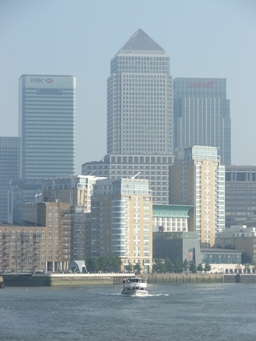The largest single property deal in UK history, both in form and…in substance
Sale and leaseback of a very noticeable building by a very noticeable bank! Is this a sign of a bank needing cash flow to shore up its solvency? Or just a good opportunity at a good moment in time? And how do we tell the shareholders about it?

In 2007, HSBC sold and leased back its iconic headquarters in London, the 1.1 million square foot, 210 metre high, tower at 8 Canada Square, Canary Wharf.
Imagine yourself in a top floor office as a proud HSBC accountant about to book this transaction in the bank’s IFRS statements.
The buyer-lessor was a wholly-owned subsidiary of Metrovacesa, S.A. one of Europe’s highest profile property companies. Under the terms of the agreement, HSBC sold the tower for £1.09 billion and leased it back for 20 years (with an extension option for a further 5 years) against an annual rent of £43.5 million. HSBC had moved in 2002, having incurred some £500 million in tower’s construction costs.
So, how would you account for it?
First, you need to determine the nature of the lease: finance or operating? Based on available information, the lease has fair chances to be operating, as (a) the term is 20(+5) years, with the building (the useful life of which may exceed 40 years) being only 5 years old on lease inception, and (b) the present value of the agreed annual rents probably falls significantly below the upfront selling value.
If that would be the case (operating lease-back), you would (a) take the building out of HSBC’ balance-sheet at its carrying amount, (b) recognise upfront the profit made on disposal, and (c) subsequently take the incurred rental costs to operating expenses, on an accruals basis.
Fairly straightforward, isn’t it ?







